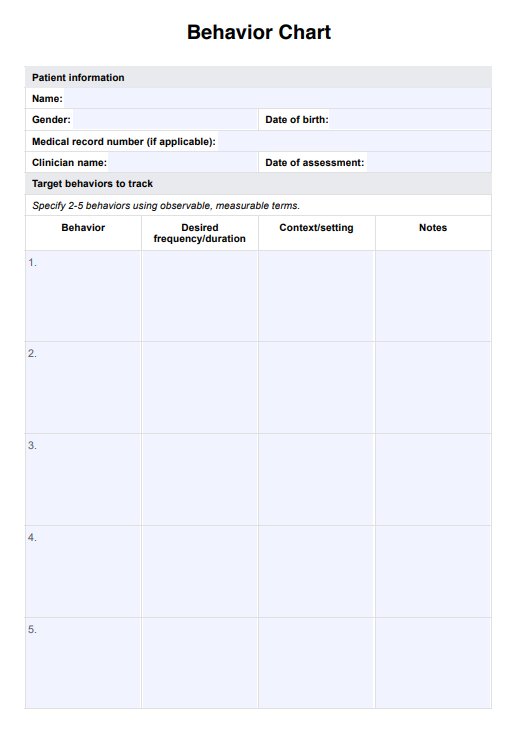Parents, educators, and therapists use behavior charts to encourage positive behavior and discourage negative behaviors in kids, including elementary students and those with special needs.

Behavior Charts
Download our Behavior Charts template to help clients in nurturing positive behavior effectively.
Behavior Charts Template
Commonly asked questions
Behavior charts are usually used as part of a behavior management strategy. They can be particularly effective for managing behaviors related to ADHD, autism, or oppositional defiant disorder.
Behavior charts are used to track specific behaviors and provide immediate feedback. The individual earns rewards for positive behavior and may lose privileges for negative behavior.
Behavior charts can help reinforce positive behavior, provide structure, improve communication, and teach responsibility. They also provide a visual representation of progress, which can boost self-esteem and motivation.
EHR and practice management software
Get started for free
*No credit card required
Free
$0/usd
Unlimited clients
Telehealth
1GB of storage
Client portal text
Automated billing and online payments











